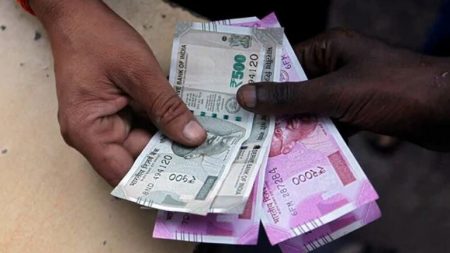US’ Currency monitoring Watchlist 30/05/2019 – Posted in: Press Information Bureau – Tags: United State
US’ CURRENCY MONITORING WATCHLIST
For: Preliminary & Mains: GS – II, III
Topic covers: US’ Currency monitoring, Countries in list, Criteria, Why India removed, Implications
News Flash
The US administration has removed India from its currency monitoring watchlist. In its semi-annual foreign-exchange report to the Congress, the US Treasury Department did not mention India’s name in the watchlist of countries with potentially questionable foreign exchange policies.
The United States’ currency monitoring watchlist includes countries with potentially “questionable” foreign exchange policies and practice currency “manipulation”.
Criteria
Countries with a current-account surplus equivalent to 2 per cent of gross-domestic product are eligible for the list. Earlier it was 3 per cent.
It also include repeated intervention in the currency markets and a trade surplus with the US of at least $20 billion.
List of the Countries
- Not in List: India and Switzerland (Both were placed in the bi-annual currency watch list in October last year)
- In List: China, Japan, Germany, South Korea, Ireland, Italy, Malaysia, Singapore and Vietnam.
Why India and Switzerland removed?
- India and Switzerland were removed because for two consecutive reports they had both met only one of three criteria necessary for inclusion on the monitoring list.
- While India had a significant bilateral surplus, Switzerland had a material current account surplus.
Why Singapore, Malaysia and Vietnam were added?
Singapore made the list because of its large current account surplus and net foreign currency purchases of at least $17 billion in 2018, equivalent to 4.6% of GDP, according to the Treasury. Malaysia and Vietnam were cited for their bilateral trade and current account surpluses.
Implications
The designation of a country as a currency manipulator does not immediately attract any penalties, it tends to dent the confidence about a country in the global financial markets.
Why is this significant?
- Tweaks in currency policy has been used by the Trump administration to browbeat countries that, from Washington’s perspective, have hurt American businesses and consumers.
- For India, this comes amid the ongoing trade spat between Washington and New Delhi.
- Trump has repeatedly claimed that India is a “tariff king” and imposes “tremendously high” tariffs on American products, while also dismissing as “inadequate” the Indian government’s decision to halve the import tariff on Harley-Davidson motorcycles from 100% to 50% last year, even as he has maintained that his administration is “fixing broken trade deals” to protect American workers.
What is currency manipulation?
The US Department of the Treasury publishes a semi-annual report in which the developments in global economic and exchange rate policies are reviewed.
If a US trade partner meets three assessment criteria, the US labels it a currency manipulator.
- First, a significant bilateral trade surplus with the US is one that is at least $20 billion;
- second, a material current account surplus is one that is at least 2% of GDP;
- and third, persistent, one-sided intervention reflected in repeated net purchases of foreign currency and total at least 2% of an economy’s GDP over a year.
Source: The Hindu
You can follow us on LinkedIn and for more updates related to UPSC IAS Preparation, Like our Facebook Page and subscribe our Diligent IAS Youtube Channel
Also Read Related Daily News
- IMD World Competitiveness Rankings 2019
- Anthropocene – New Epoch
- East Container Terminal at Colombo Port

